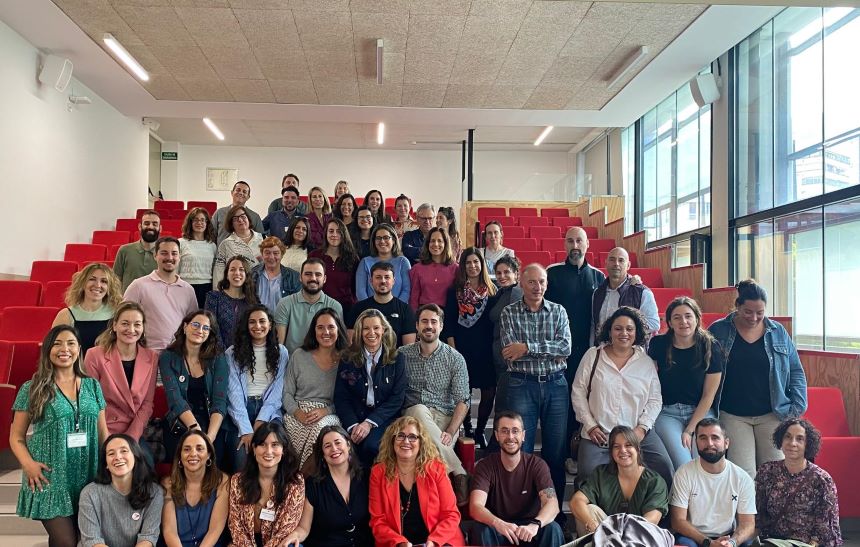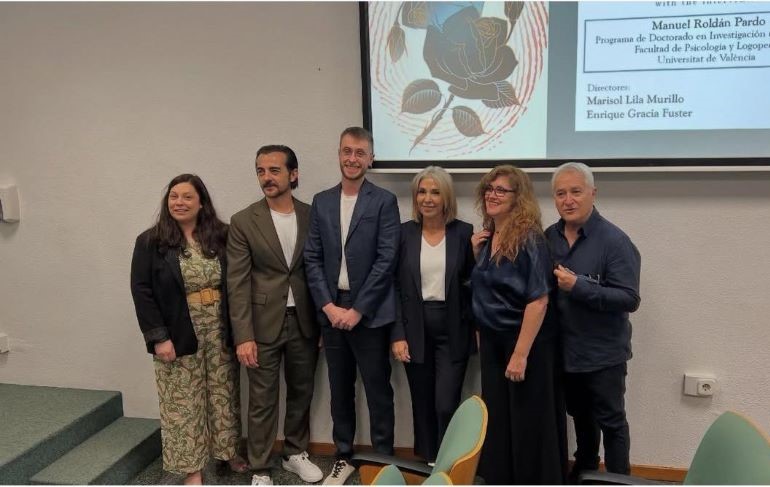At VIO-STRATEGY we conduct research on a number of child maltreatment-related issues: child maltreatment in the context of parenting practices, the effects of parental rejection on children's psychosocial adjustment, the cultural acceptability of corporal punishment, the analysis of contextual influences on the risk of child maltreatment, and cross-cultural analysis.
Violence in parent-child relationships: Child maltreatment
- Rodríguez, C. M., Bárrig Jó, P., Gracia, E., & Lila, M. (2023). Social information processing theory indicators of child abuse risk: Cultural comparison of mothers from Peru and the United States. Children, 10(3), 545. https://doi.org/10.3390/children10030545
- Marco, M., López-Quílez, A., Gracia, E., & Maguire-Jack, K. (2022). The spatio-temporal epidemiology of child maltreatment: Using Bayesian hierarchical models to assess neighborhood influences. In K. Maguire-Jack, & C. Katz (Eds.), Neighborhoods, communities and child maltreatment (pp.9-29). Springer. https://doi.org/10.1007/978-3-030-93096-7_2
- Gracia, E., Rodriguez, C. M., Martín-Fernández, M., & Lila, M. (2020). Acceptability of family violence: Underlying ties between intimate partner violence and child abuse. Journal of Interpersonal Violence, 35(17-18), 3217-3236. https://doi.org/10.1177/0886260517707310
- Marco, M., Maguire-Jack, K., Gracia E., López-Quílez, A. (2020). Disadvantaged neighborhoods and the spatial overlap of substantiated and unsubstantiated child maltreatment referrals. Child Abuse & Neglect, 104, 104477. https://doi.org/10.1016/j.chiabu.2020.104477
- Marco, M., Gracia, E., López-Quílez, A., & Freisthler, B. (2019). Child maltreatment and alcohol outlets in Spain: Does the country drinking culture matters? Child Abuse & Neglect, 91, 23-30. https://doi.org/10.1016/j.chiabu.2019.02.010
- Gracia, E., López-Quílez, A., Marco, M., & Lila, M. (2018). Neighborhood characteristics and violence behind closed doors: The spatial overlap of child maltreatment and intimate partner violence. PLoS ONE, 13(6), e0198684. https://doi.org/10.1371/journal.pone.0198684
- Gracia, E., López-Quílez, A., Marco, M., & Lila, M. (2017). Mapping child maltreatment risk: A 12-year spatio-temporal analysis of neighborhood influences. International Journal of Health Geographics, 16, 38. https://doi.org/10.1186/s12942-017-0111-y
- Rodríguez, C. M., Gracia, E., & Lila, M. (2016). A preliminary evaluation of the Spanish parent–child aggression acceptability movie task in Spain. Journal of Family Violence, 31, 549-555. https://doi.org/10.1007/s10896-016-9804-4
- Rodríguez, C. M., Gracia, E., & Lila, M. (2016). Multimethod prediction of child abuse risk in an at-risk sample of male intimate partner violence offenders. Child Abuse & Neglect, 60, 27-35. https://doi.org/10.1016/j.chiabu.2016.09.006
- Gracia, E., Fuentes, M. C., Garcia, F., & Lila, M. (2012). Perceived neighborhood violence, parenting styles, and developmental outcomes among Spanish adolescents. Journal of Community Psychology, 40(8), 1004-1021. https://doi.org/10.1002/jcop.21512
- Gracia, E., & Herrero, J. (2008). Beliefs in the necessity of corporal punishment of children and public perceptions of child physical abuse as a social problem. Child Abuse & Neglect, 32(11), 1058-1062. https://doi.org/10.1016/j.chiabu.2008.05.004
- Gracia, E., & Herrero, J. (2008). Is it considered violence? The acceptability of physical punishment of children in Europe. Journal of Marriage and Family, 70(1), 210-217. https://doi.org/10.1111/j.1741-3737.2007.00472.x
- Gracia, E. (2007). El apoyo social a domicilio: La prevención del riesgo social en familias mediante visitas al hogar. En A. Blanco y J. Rodríguez Marín (Coords.), Intervención psicosocial (pp. 301-322). Prentice-Hall (Pearson Educación).
- Lila, M., Garcia, F., & Gracia, E. (2007). Perceived paternal and maternal acceptance and children's outcomes in Colombia. Social Behavior and Personality, 35(1), 115-124. https://doi.org/10.2224/sbp.2007.35.1.115
- Gracia, E., & Herrero, J. (2006). Perceived neighborhood social disorder and residents’ attitudes toward reporting child physical abuse. Child Abuse & Neglect, 30(4), 357-365. https://doi.org/10.1016/j.chiabu.2005.11.001
- Gracia, E., Lila, M., & Musitu, G. (2005). Rechazo parental y ajuste psicológico y social de los hijos. Salud Mental, 28(2), 73-81. https://www.redalyc.org/pdf/582/58222807.pdf
- Lila, M., & Gracia, E. (2005). Determinantes de la aceptación-rechazo parental. Psicothema, 17(1), 107-111. https://www.redalyc.org/pdf/727/72717117.pdf
- Gracia, E., & Musitu, G. (2003). Social isolation from communities and child maltreatment: A cross-cultural comparison. Child Abuse & Neglect, 27(2), 153-168. https://doi.org/10.1016/S0145-2134(02)00538-0
- Gracia, E. (2002). El maltrato infantil en el contexto de la conducta parental: Percepciones de padres e hijos. Psicothema, 14(2), 274-279. https://www.redalyc.org/pdf/727/72714214.pdf
- Gracia, E. (2002). Las víctimas invisibles de la violencia familiar: El extraño iceberg de la violencia doméstica. Paidós.
- Gracia, E. (2002). Visibilidad y tolerancia social de la violencia familiar. Intervención Psicosocial, 11(2), 201-211. https://journals.copmadrid.org/pi/art/1f4fe6a4411edc2ff625888b4093e917
- Gracia, E., & Musitu, G. (2000). Psicología social de la familia. Paidós.
- Gracia, E. (1995). Visible but unreported: A case for the “not serious enough” cases of child maltreatment. Child Abuse & Neglect, 19(9), 1083-1093. https://doi.org/10.1016/0145-2134(95)00070-O











